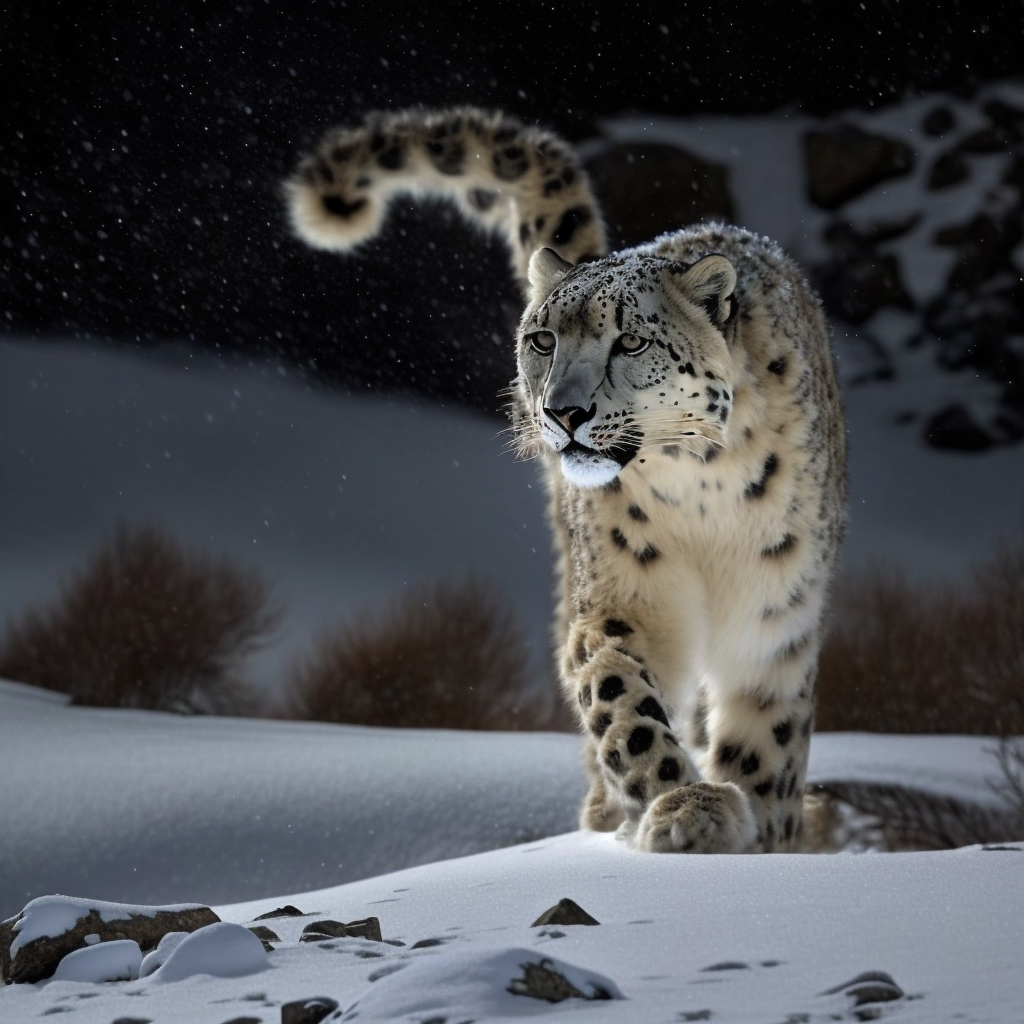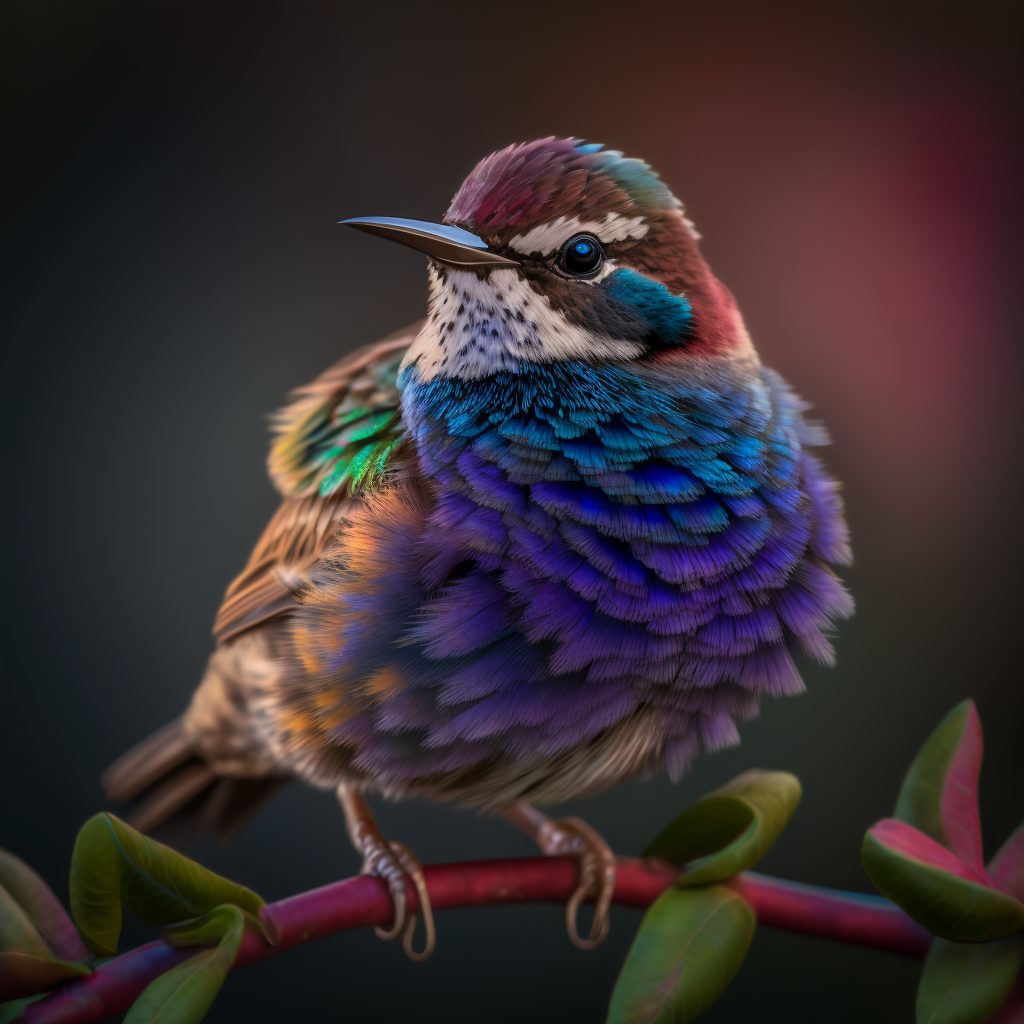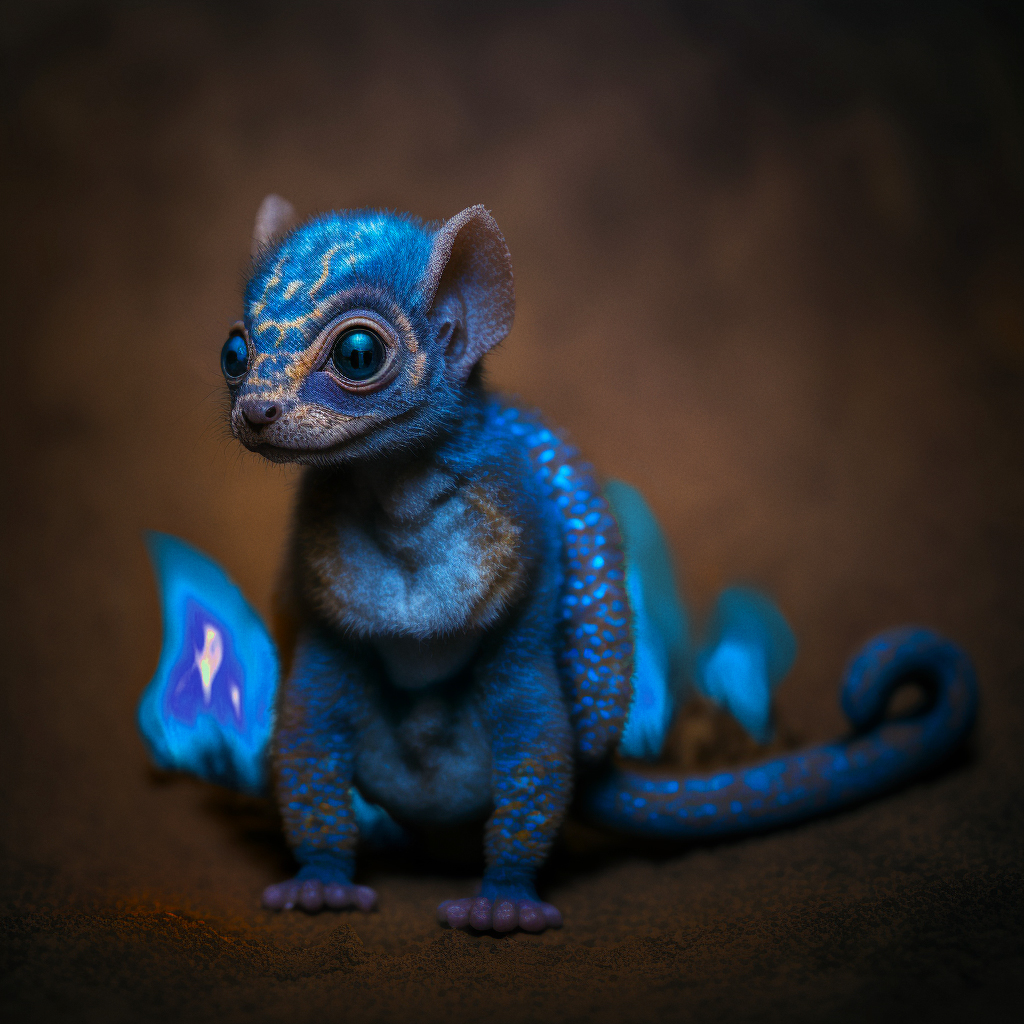Discover more creatures
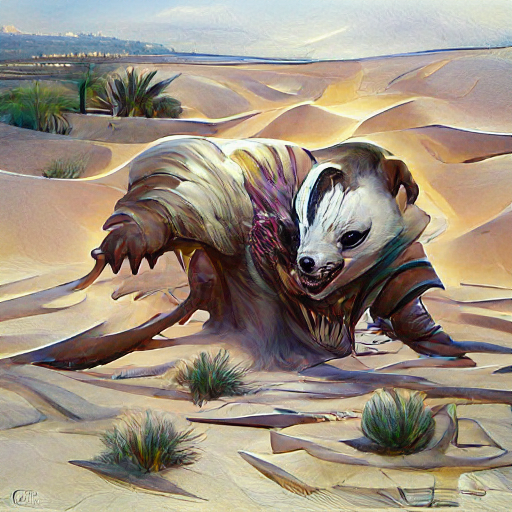
#085 Worgrad
Worgrads are small desert-dwelling creatures that subsist on a diet of insects, light rays, and gusts of desert wind. They are very small, with large, black eyes and soft, sandy-colored fur that feels like sandpaper. Worgrads live in small burrows, consisting of large, open rooms connected by winding tunnels, which they build themselves out of desert sand, clay, and plant matter. They spend most of their day sleeping, but they are very active at night, and can sometimes be heard climbing across the ceilings of their burrows making mysterious clicking noises.

#095 Scotty
Believe it or not, scotties are actually descendants of dinosaurs! Scientists discovered a fourth classification of dinosaur, subterranean, during the disastrous decades-long journey to drill toward the planet's core for more resources. The scotties now kept as pets are a highly-domesticated breed meant to bring back the nostalgia and companionship of dogs for older generations.
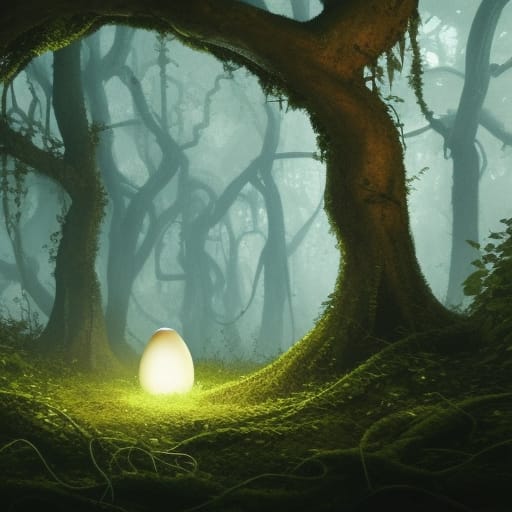
#371 Tangleweaver
If you find this strange egg nestled in leaves in the darkest part of the forest, do not touch it. Run as far and as fast as you can. Those who come too near the tangleweaver will be entranced, and fall into a deep sleep while vines grow over their bodies, hiding what was done. When the tangleweaver hatches, it will crawl into and infect the victim, using the body as a disguise to mingle with humans. It will suck on the souls of the humans around it for years, until the day it has grown large and strong enough to break free of its human suit and begin feasting on flesh.
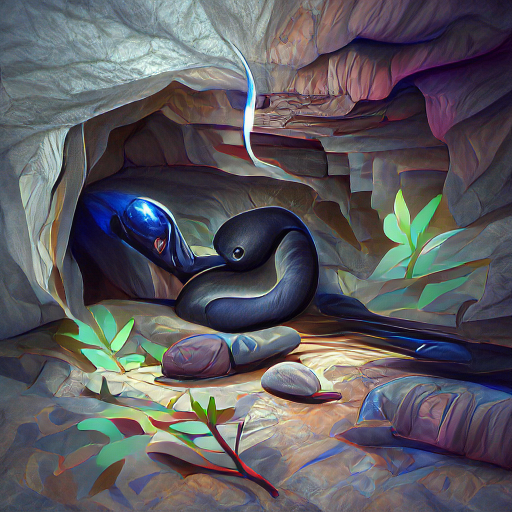
#106 Sidjif
The sidjif is a large, snakelike creature that is commonly used as a mount for the orcs and goblins of the world. Their massive bodies can grow up to 60 feet in length, and are powerful and muscular enough to support the weight of ten riders. They have four hearts, a large mouth, and several eyes that can be found on their head, neck, and body. They are very trusting and have been known to forge strong bonds with the riders that they are paired with. Their name comes from the sound that they make when they are pleased or hungry, which follows a short, warbling beat.

#133 Reeborra
Reeborras are large, herbivorous creatures native to the planet of the same name. They are closely related to the earth sloth and are often found in the desert dunes. They have short tails that consistently drip water when they're calm, which other creatures often latch on to when thirsty. Reeborras are very peaceful creatures and are often hunted by poachers for their distinctive skull and large water sac.
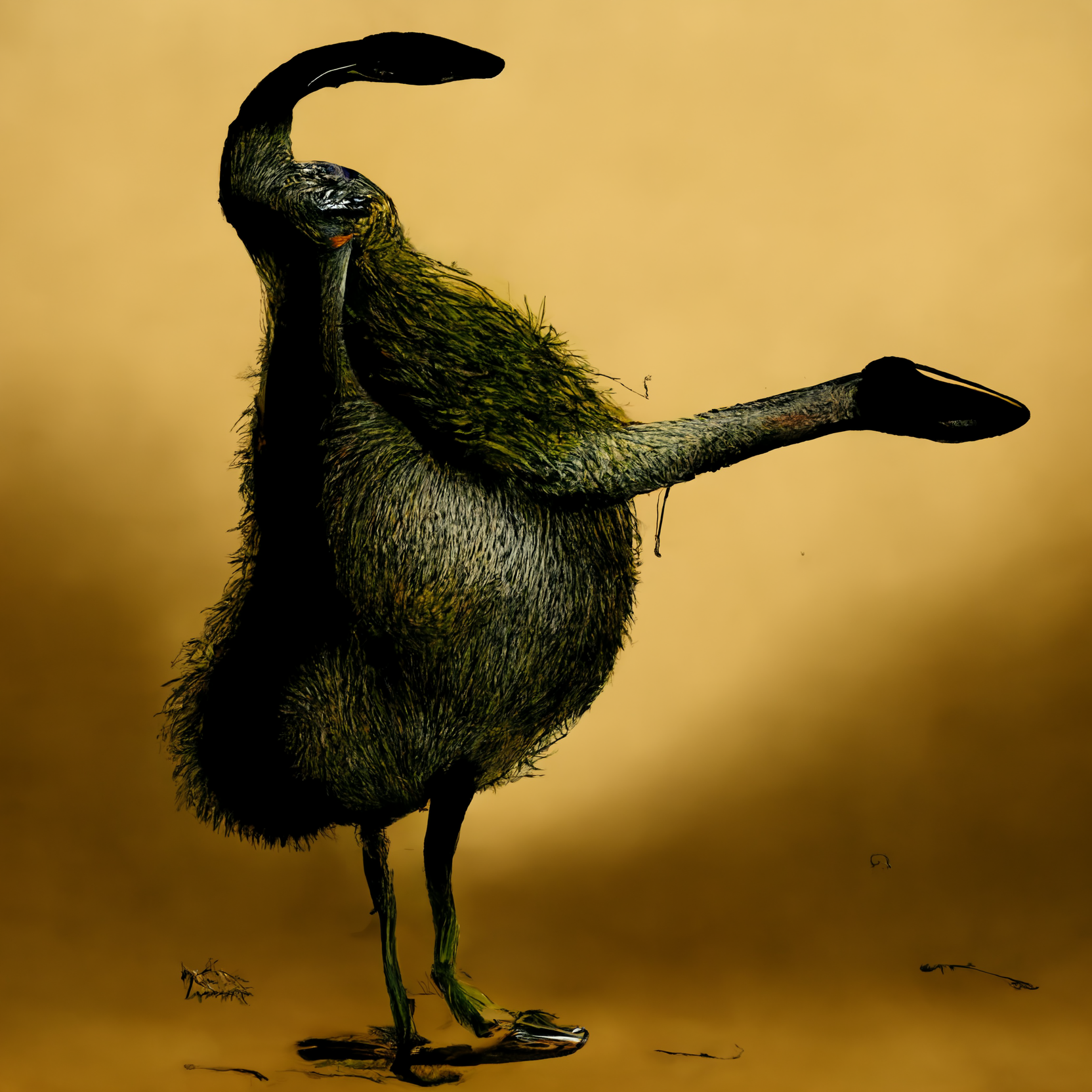
#211 Dromlek
Dromleks are intelligent, flightless birds that originate from a far-off galaxy where gravitational directionality frequently changes, and dromleks therefore evolved omni-directional legs to compensate for sudden directional shifts. They are able to form complex sentences, but their voices are so muffled by their many feet that they are rarely able to communicate with other animals, including other dromleks. In their free time, they enjoy making muffled music with their mouths, observing the omnidirectional growth of trees native to their planet, and going on long, difficult walks.
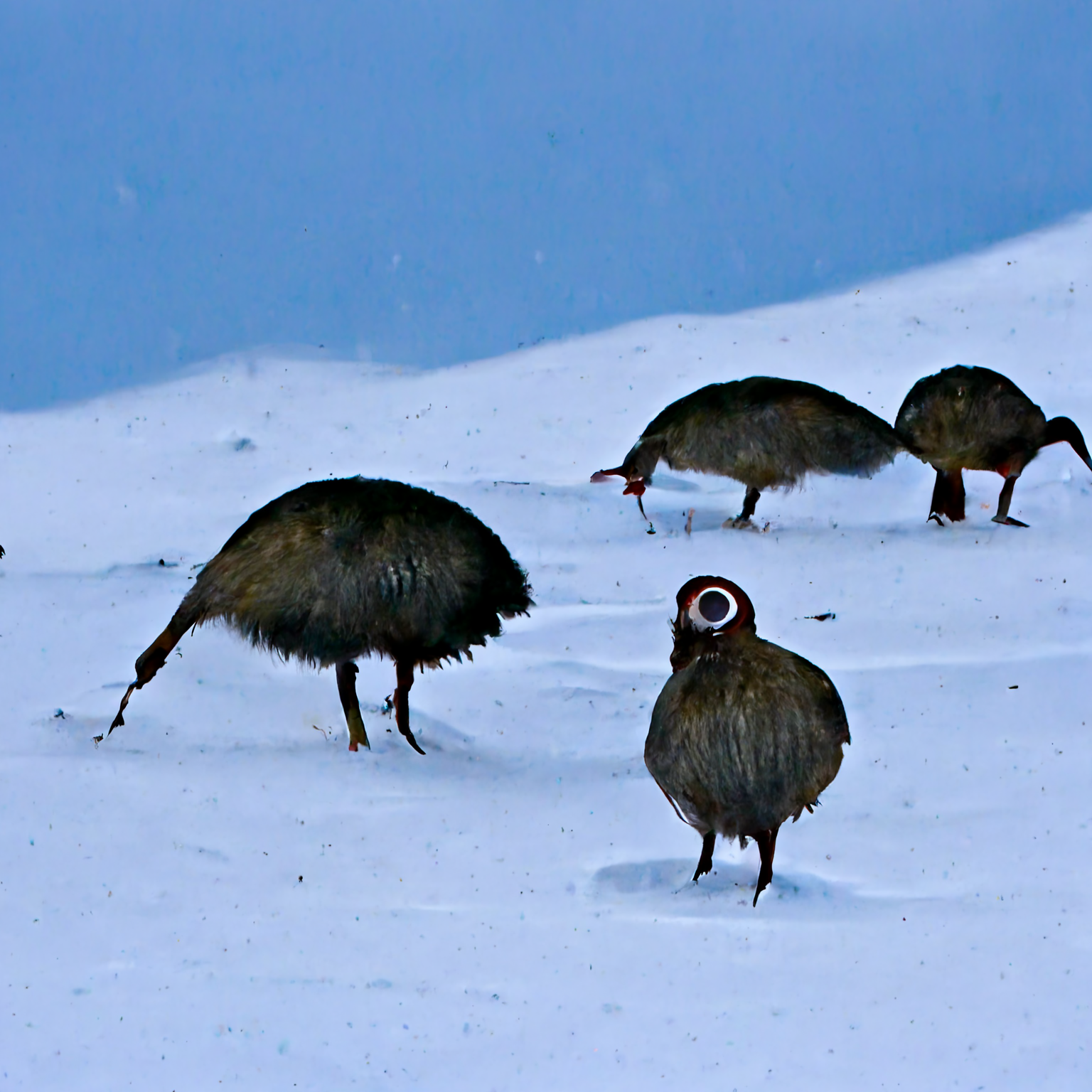
#199 Hæglre
Hæglres are large, flightless birds that spend most of their time scavenging for food in the snow-covered plains of the world. They are very social creatures that live in groups of up to twenty individuals. In the harsher winters, they will gather together to keep each other warm. Hæglres are also very territorial and will attack any creatures that get too close to their nest, but they live so far away from most other life that this rarely occurs.

#277 Ka'ala'kai
Not much is currently known about the ka'ala'kai. These gigantic, green creatures seem unaffected by life in a vacuum; their systems for mobility aren't yet completely known, as they seem to be able to ignore the effects of gravity (or no gravity) at will. So far, ka'ala'kai have only been sighted and recorded via long-distance telescopes pointed at abandoned planets, moons, meteors, and comets. Most sightings have corroborated the theory that ka'ala'kai are matriarchial nomads that travel from celestial body to body with their children, and that adult ka'ala'kai separate from the pack when they have children of their own.
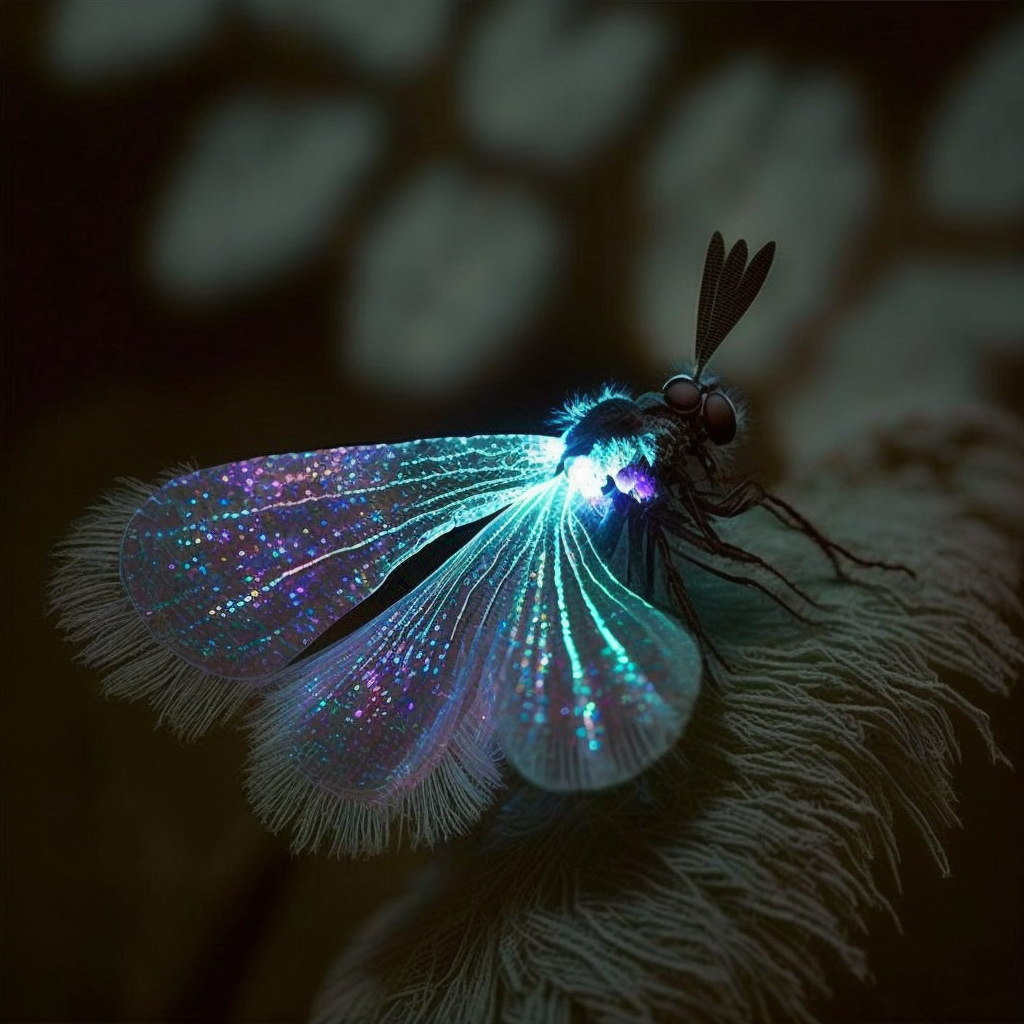
#352 Glimmerwisp
Glimmerwisps are small, fairy-like creatures with translucent, glowing wings. They have delicate, elongated features and shimmer in a variety of colors depending on their mood and surroundings. Glimmerwisps are often found in forests and meadows, where they can easily hide among the plants and flowers. They are also drawn to sources of light, such as torches and fireflies, and can often be seen flitting about in the darkness. Glimmerwisps feed on nectar and small insects, and are known for their playful and curious nature. They are also highly social creatures, often forming large communities and working together to protect their territory. Glimmerwisps have the ability to create and manipulate light, using it to communicate with each other and to create dazzling displays.
Popular Stories
-
A Dance as Old as Stone by Anonymous user #144
Beneath the craggy, frost-kissed peaks, where mountain airs do blow, The d'geft dwell, a solitude, in realms of stone and snow. Not as we, their lives they lead, in hollow halls of stone, Passing...
- 274 words
- ♥ 4 kudos
-
O Boolics by Muse
The boolics crawl in circles through the grass, Their lives so simple, so free from class. But in the night, they dream of more, A perfect life within their shell; a world to explore. But when t...
- 121 words
- ♥ 3 kudos
-
Ode to Dirbs by Muse
The dirb wanders fields of green With legs so thin, they're not easily seen They search for seeds and scraps to eat A diet that is mostly sweet Though fragile, their legs will mend From every bu...
- 85 words
- ♥ 1 kudo
-
Shadow of an Unknown Past Preview by Jessica
CHAPTER ONE OMENS Mariea Mariea didn’t know where she was—everything was unfamiliar, and she couldn’t remember how she had ended up there. All she knew was that it was too dark to see, and th...
- 3,983 words
- ♥ 2 kudos
-
/that/ time of year by MJ
"Is everything in the car?" My dad calls from the front door. His glasses are low on his nose, making the bags under his eyes look even larger. He's wearing a burnt orange vest over a black t-shirt...
- 582 words
- ♥ 7 kudos
-
The Rogue's Steel-Chapter I by T
"Get back here Mavros!" Helios dodged a merchant and his cart. He huffed, as he glanced toward which direction he could go. He bolted towards an alleyway, skidding on the dirty cobblestone. "Maybe ...
- 3,044 words
- ♥ 6 kudos

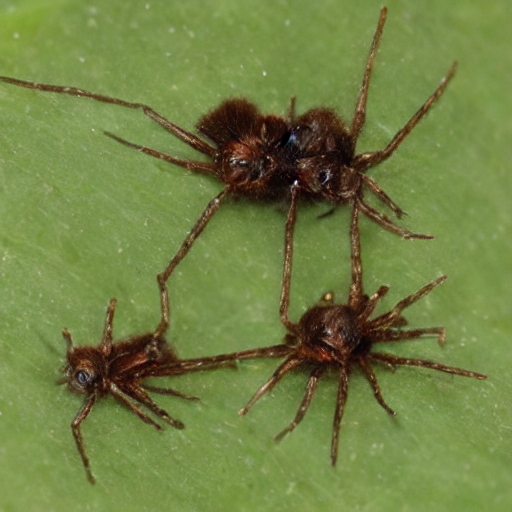
.png)
.png)
